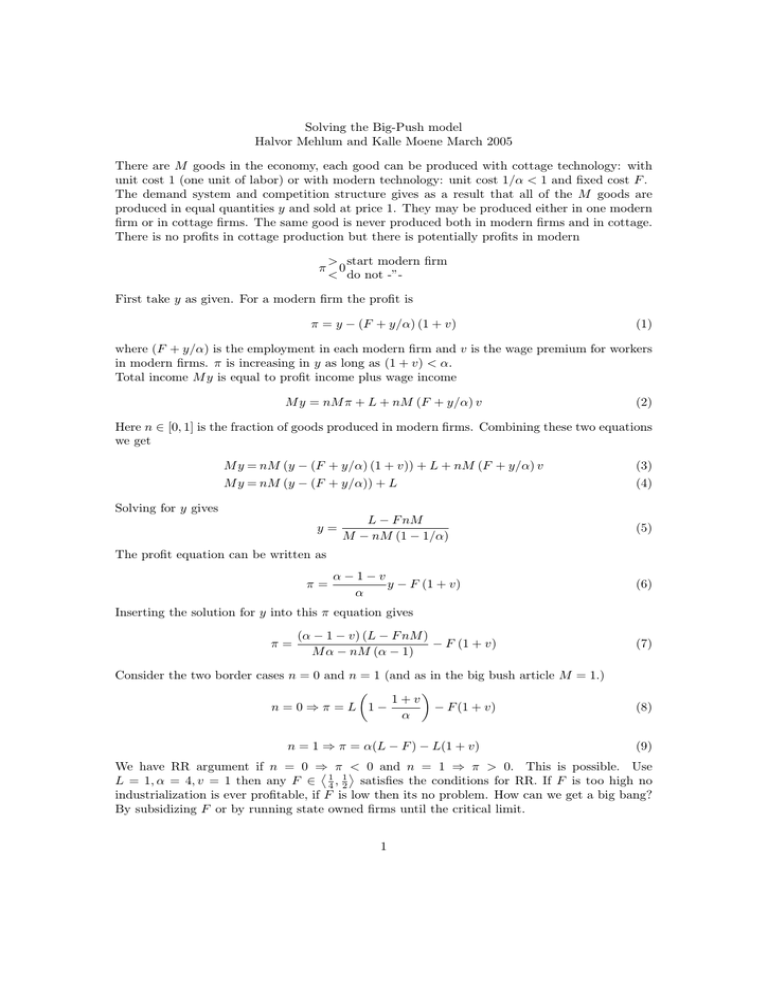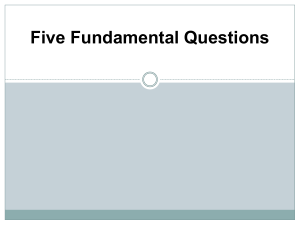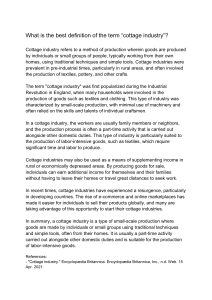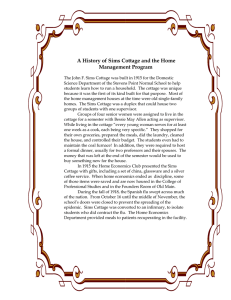Solving the Big-Push model Halvor Mehlum and Kalle Moene March 2005
advertisement

Solving the Big-Push model Halvor Mehlum and Kalle Moene March 2005 There are M goods in the economy, each good can be produced with cottage technology: with unit cost 1 (one unit of labor) or with modern technology: unit cost 1/α < 1 and fixed cost F . The demand system and competition structure gives as a result that all of the M goods are produced in equal quantities y and sold at price 1. They may be produced either in one modern firm or in cottage firms. The same good is never produced both in modern firms and in cottage. There is no profits in cottage production but there is potentially profits in modern π > start modern firm 0 < do not -”- First take y as given. For a modern firm the profit is π = y − (F + y/α) (1 + v) (1) where (F + y/α) is the employment in each modern firm and v is the wage premium for workers in modern firms. π is increasing in y as long as (1 + v) < α. Total income M y is equal to profit income plus wage income M y = nM π + L + nM (F + y/α) v (2) Here n ∈ [0, 1] is the fraction of goods produced in modern firms. Combining these two equations we get M y = nM (y − (F + y/α) (1 + v)) + L + nM (F + y/α) v M y = nM (y − (F + y/α)) + L (3) (4) Solving for y gives L − F nM M − nM (1 − 1/α) (5) α−1−v y − F (1 + v) α (6) y= The profit equation can be written as π= Inserting the solution for y into this π equation gives π= (α − 1 − v) (L − F nM ) − F (1 + v) M α − nM (α − 1) Consider the two border cases n = 0 and n = 1 (and as in the big bush article M = 1.) 1+v n=0⇒π =L 1− − F (1 + v) α n = 1 ⇒ π = α(L − F ) − L(1 + v) (7) (8) (9) We have RR argument if n = 0 ⇒ π < 0 and n = 1 ⇒ π > 0. This is possible. Use L = 1, α = 4, v = 1 then any F ∈ 41 , 12 satisfies the conditions for RR. If F is too high no industrialization is ever profitable, if F is low then its no problem. How can we get a big bang? By subsidizing F or by running state owned firms until the critical limit. 1











